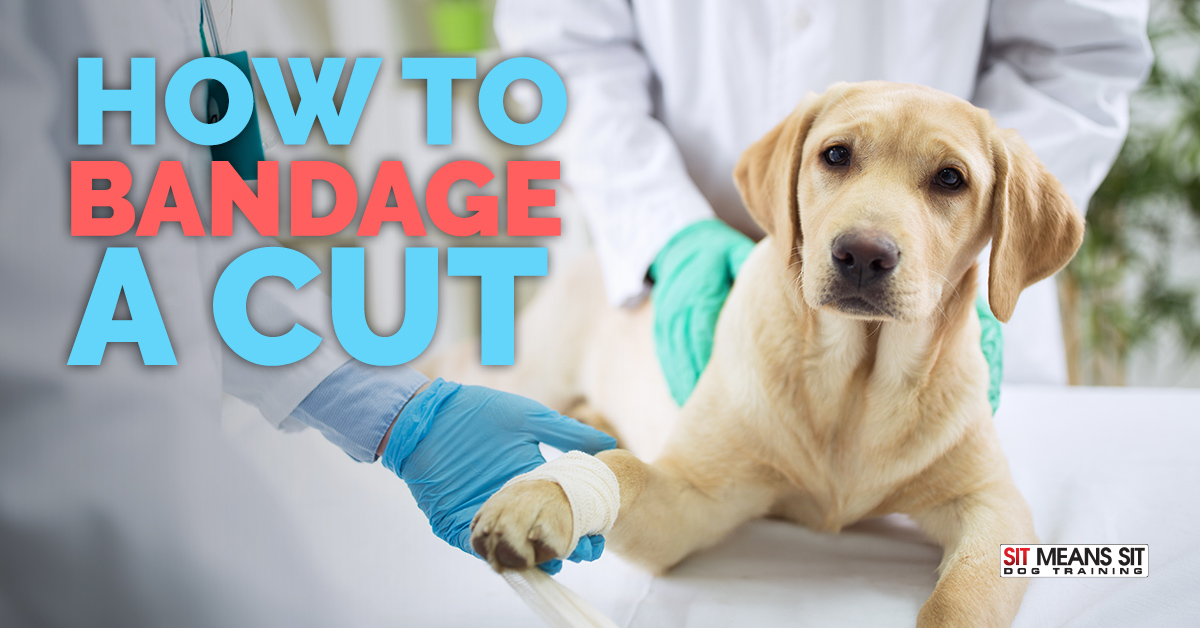In an emergency situation, you need to know how to act quickly and efficiently to take care of your dog. While you should leave serious medical procedures to your vet or emergency services, knowing how to bandage a cut on your dog is a useful skill to have going forward. After all, our doggos are curious and adventurous creatures, so you never know when you may need to bust out your bandaging skills. Here’s all you need to know about bandaging a cut on your furry friend:
Have the Right Supplies Available
First and foremost, you need to have the proper supplies at the ready to take care of your dog. First-aid kits are absolutely essential for pet parents, and there are a few things that you should be mindful to keep in your pet first-aid kit. Gauze, antiseptic, non-stick bandages, tape, and sterile cotton pads are some of the items that you’ll need for bandaging your dog. If you don’t already have a doggy first-aid kit, we have some tips for you to assemble one of your own. Otherwise, you can always purchase a pre-assembled kit from your local pet supplies store. Wherever you get your pet first-aid kit from, it’s important that you have one nearby when you need it!
Clean and Protect the Wound
When disaster strikes, you’ll first need to clean the wound and protect it from any outside materials that could get into the cut and infect it. If you have some gloves handy, we recommend putting them on as an extra precaution. Next, clean the injury out with some soap and water if you have it handy. Make sure all dirt and grime is out of the wound! Then, apply the antiseptic that you should have in your first-aid kit. This will prevent infection in the wound. Finally, apply one of your sterile, absorbent pads to the cut. Pads should be nonstick, as any sticky material could reopen the wound upon removal. By the time you’re done with these first few steps, the wound should be covered and protected from infection.
Wrapping the Wound
These steps are important for keeping the bandage on your dog, even when they’re active. Over the pad that you should’ve just applied, wrap a gauze bandage with one-third of the bandage exposed on each wrap. Non-stick bandages work great for this, since they won’t irritate your pup’s fur. If you don’t have non-stick gauze, though, use your regular wraps and stick some adhesive tape over the gauze bandage to hold it in place. Place two fingers under the bandage to make sure that it’s the appropriate pressure on your pup. This will ensure that the bandage is tight enough to stay on, but not so tight that it would cut off circulation.
Trickier Wound Care
While some wounds end up in areas that are easy to bandage and protect, many are trickier to take care of and may require a few extra steps. For leg wounds, wrap roll cotton over the gauze, then add some stretch gauze. Use adhesive tape to keep the bandage in place. For tail wounds, be sure to use materials that are long enough to cover the wound. Be extra careful with securing the bandage on your dog’s tail in as tail wagging could loosen it. For torso wounds, wrap a towel or old shirt around the torso. Use pins to secure the bandage. You can always rewrap the bandage if needed, so just do your best and adjust later if necessary.
Wounds can be scary and difficult to manage, but by following these steps, your dog will be in great shape in no time! Make sure you’re ready to take care of your beloved furry friend when they need it most.

